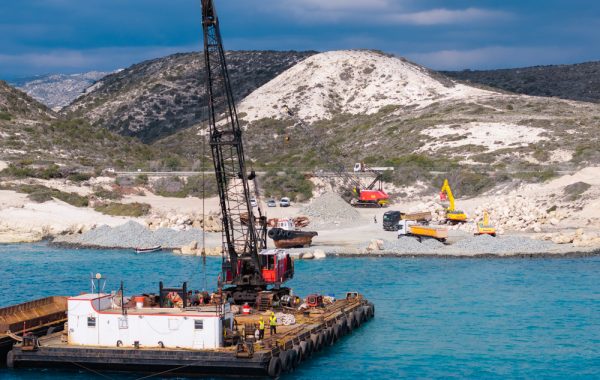Monitoring birds and other wildlife is possible thanks to a variety of tools and methods. These include seasonal species-specific counts, such as our annual Griffon Vulture census or on-board surveys like the ones we undertake to monitor seabirds and other marine mammals as part of our Cyprus Bycatch Project. They can also be done “remotely” either with the use of GPS transmitters on the animals or with the use of camera traps installed in specific areas. No matter the method used, the aim is always the same: to keep track of our birds, the threats they face and the health of our countryside. This information is the foundation for our conservation actions.
As part of Pandoteira project (also known as LIFE IP Physis), a 10-year project dedicated to the protection and the proper management of all of our Natura 2000 sites, we have been conducting surveys together with the Game and Fauna Service for two important wetlands in Cyprus, Paralimni Lake and Larnaca Salt Lake. These surveys focus on a few key species (Kentish Plover Charadrius alexandrinus, Greater Flamingo Phoenicopterus roseus, Black-winged Stilt Himantopus himantopus, Eurasian Curlew Numenius arquata and Spur-winged Lapwing Vanellus spinosus) and the threats they face at these locations. In spring and early summer, when the Kentish Plover, the Black-winged Stilt and the Spur-winged Lapwing mate, lay their eggs and raise their young, monitoring becomes more intensive.
Last year’s breeding season was a successful one for the birds. In total, our teams counted 42 Black-winged Stilt and 4 Spur-winged Lapwing breeding pairs at Paralimni Lake and 22 Black-winged Stilt, 8 Spur-winged Lapwing, and 2 Kentish Plover breeding pairs at Larnaka Salt Lakes. For each breeding location or a nest with eggs that we identified that was located at a high-risk area (i.e. closer to the road, or at a drier part of the lake which is more accessible to people and predators such as a fox or a feral cat), the Game and Fauna Service wardens installed camera traps assess the dangers. A total of 6 cameras were installed at the two wetlands over a 3 month-period and we managed to capture both the adults and chicks of the breeding species of interest. We did however manage to capture other species also, such as Greater Flamingo, Black Francolin, Stone Curlew and other waders, gulls as well as Hare.
Camera traps allow us to monitor a site or a nest around the clock, without being there. As they are motion activated, this means they only record when something moves in front of them. This could be anything, from a person, a bird or even a leaf! As you can imagine, analyzing the material captured is a very time-consuming process, however it gives us great insights to the activities of these animals.
Thanks to the camera traps, we were able to see a Spur-winged Lapwing nest being abandoned due to disturbance, vehicle tracks very close to a Kentish Plover nest and foxes and feral cats being at close proxixmity to a Spur-winged Lapwing and a Black-winged Stilt nest. The cameras also recorded some disturbance caused by Yellow-legged Gulls Larus michaelis close to a Kentish Plover and a Little Tern Sternula albifrons nest.

The most common threats that cause disturbance to breeding birds at the two lakes are uncontrolled access with motorcycles or 4×4 vehicles, dog walkers, poaching, feral cats and wild foxes. However, last spring was not representative in terms of the threats, because of the pandemic and movement restrictions. This does not mean that the data collected are not useful. This past year can act as a “control year”, meaning a year with less human disturbance and therefore, we will be able to compare the data with the data of next or even previous years.
We will continue these surveys throughout the next breeding season as well. All the data collected will be used to plan conservation measures and to better protect these wetlands and the species that inhabit them. You can stay up to date with the project’s actions on Facebook, Instagram and Twitter.
Important note: The camera traps are placed close to nests or at locations of important significance to birds, away from houses or roads so as not to record any passers-by.




